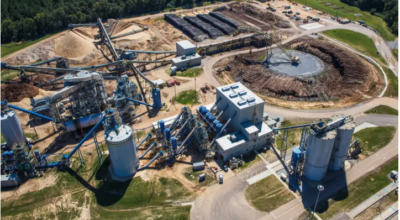Does your business have year-end tax opportunities?
Published 12:14 am Sunday, November 27, 2011
Constant political gridlock over the past three years in Washington, D.C has made traditional tax planning a difficult endeavor for U.S businesses and their tax practitioners. Tax cuts enacted during the Bush years were set to expire at the end of 2010 until a last minute act of Congress extended the provisions. In addition to the extension of previously enacted provisions, the Tax Relief Act of 2010 included additional incentives designed to inject life into a sputtering U.S economy.
A separate piece of legislation passed earlier in the year, The Small Business Jobs Act of 2010, provides a number of tax saving opportunities as well. Given the current political stalemate in our government, another full extension of these provisions, many of which will sunset at the end 2011, is unlikely. In light of the impending expiration of these tax benefits, taxpayers should take carful look at some of the key tax breaks before they are gone.
Section 179 is a portion of the tax code designed to encourage capital investment. The provision allows for the immediate expensing of capital expenditures that would normally be recovered over a number of years. For tax years beginning in 2010 or 2011, the Small Business Jobs Act of 2010 provides a temporary increase in the Section 179 limit to $500,000. Section 179 has traditionally been limited to what the tax code refers to as personal property. Personal property includes property such as computer equipment, vehicles, and furniture used in the active conduct of a trade or business. The Small Business Jobs Act of 2010 provides additional incentives for investment by allowing Section 179 expensing for certain types of real property. In tax years beginning in 2010 and 2011 a taxpayer can elect up to $250,000 of the $500,000 Section 179 limit for qualified real property acquired by purchase in the active conduct of a trade or business. Under the provisions of the Tax Relief Act of 2010, the Section 179 limit will fall to $125,000 for tax years beginning in 2012.
A provision designed to entice investment is bonus depreciation. Similar to Section 179 expensing, bonus depreciation has been altered and extended several times by various tax acts. The Tax Relief Act of 2010 increased the 50 percent bonus limitation to 100 percent of investments in qualified bonus depreciation property made before Dec. 31, 2011. Qualified bonus depreciation property is generally limited to new trade or business property such as equipment and automobiles. Purchased computer software, as well as certain types of leasehold improvements also qualify for bonus depreciation treatment.
The Tax Relief Act of 2010 also included an extension of provisions designed the address the nation’s high rate of unemployment. The Work Opportunity Credit provides incentives for businesses to hire individuals from certain targeted groups that have a particularly high unemployment rate.
Carr Hammond is a certified public accountant with Silas Simmons LLC.





